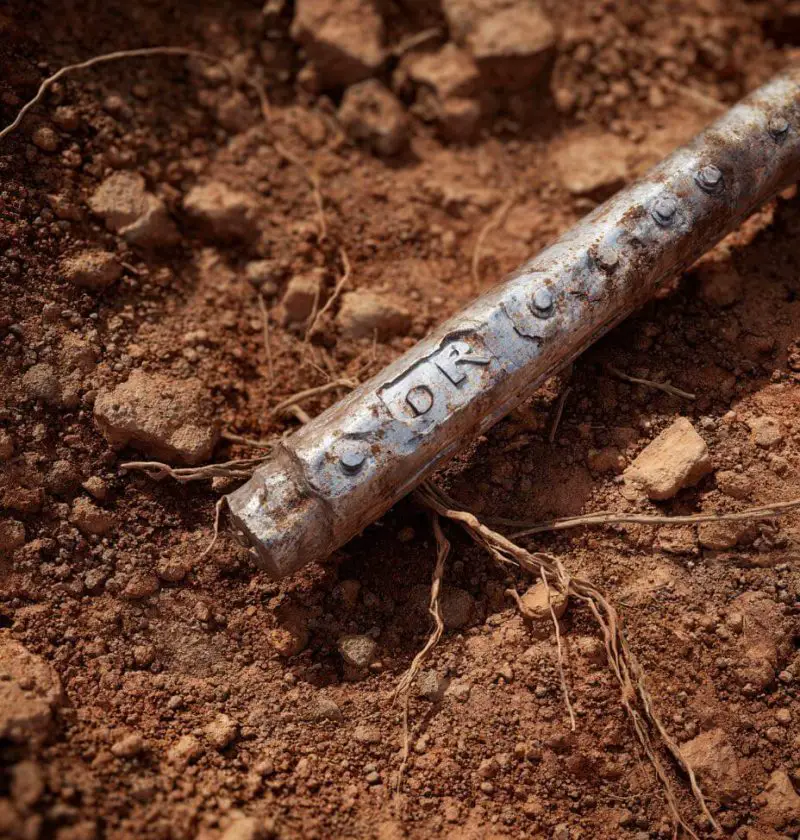Save This Recipe
You ever look at your yard and think, “Huh… I wonder how far this actually goes?” Maybe it’s because you’re itching to put up a fence, plant some trees, or settle a good old-fashioned neighborly debate (you know the kind). Whatever the reason, figuring out your property line is one of those tasks that feels like it should be simple—but often turns into a bit of a treasure hunt.
Let’s walk through it together—no legal jargon, no fuss. Just some practical steps and friendly advice from someone who’s been there.
Why Property Lines Even Matter
Let me tell you, knowing where your land begins and ends can save you a lot of trouble. I’ve seen folks build a fence just to find out they planted it two feet onto the neighbor’s lot—and believe me, that kind of thing doesn’t go over well.
Here’s why you want to get it right:
-
DIY Projects: Whether you’re laying down a new driveway or putting in a garden shed, you’ll need to know what’s yours.
-
Neighbor Relations: Property lines can help clear up little disagreements—before they turn into full-blown drama.
-
Permits and Zoning: Some cities are sticklers about how close things can be to the edge of your lot.
-
Selling Your Home: Buyers love a clean, well-documented property line—it just makes everything easier.
Step 1: Dust Off That Deed
Start with the basics. Your property deed (you might find it buried in a folder from when you bought the place) should include a description of your land. Some are written in old-timey measurements—“200 feet from the big oak tree,” that kind of thing.
Keep an eye out for these terms:
-
Metes and Bounds: That’s the “from here to there” type of layout.
-
Lot and Block: Usually what you’ll see if you’re in a neighborhood development.
It might mention iron stakes, too. That’s a good sign—they’re your golden markers.
Step 2: Check for a Survey
If you’re lucky, you’ve got a property survey tucked away somewhere. It’s basically a map that shows exactly where your lot starts and stops. A survey will usually show where those iron stakes were placed when your land was first marked off.
No survey? No problem. Try calling your county clerk or records office. Sometimes they have a copy on file. If all else fails, you can always hire a surveyor—but more on that later.
Step 3: Go on a Stake Hunt (Yes, Really)
Here’s where it gets fun—grab a metal detector (you can rent one if you don’t have a buddy to borrow from) and head outside.
Those iron stakes—sometimes called pins or monuments—are usually hammered into the corners of your lot. Over time, they can get buried under dirt, grass, mulch, or just years of weather.
Here’s how you find ’em:
-
Use your survey map to get a rough idea of where the corners should be.
-
Sweep the area slowly with your metal detector, staying close to the ground.
-
Listen for a beep, then dig gently. You’re looking for a metal rod, usually about a foot long.
-
Don’t yank it out! That stake’s your legal marker.
Sometimes there’s a little plastic cap on top with a number or initials—leave it right where it is.
If You Strike Out… Don’t Sweat It
If your search turns up nothing—don’t panic. It happens more often than you’d think, especially with older homes. Those stakes could be too deep, rusted out, or maybe they were never placed.
You’ve got a couple of other options:
-
Try a GPS or property line app. LandGlide, OnX Hunt, and Regrid are some of the better ones. They’re not perfect, but they’ll give you a rough idea.
-
Still unsure? Call a pro. A licensed surveyor can mark everything out and make sure it holds up in a legal setting.
Step 4: Mark It Out (Just in Case)
Once you’ve found your iron stakes, it’s a good idea to mark those lines. You don’t need to go full fence-builder right away—just something simple so you know what’s what.
Try:
-
Bright flags
-
Wooden garden stakes
-
Rope or string between corners
That way, next time you’re digging for a flower bed or chatting with the guy next door, you can say, “Yup, that’s right where the line is.”
Step 5: Call in the Experts When You Need To
There’s no shame in bringing in a surveyor. If things are confusing, or your neighbor has strong opinions, hiring a professional is worth every penny. They’ll measure everything with that fancy equipment, mark the corners properly, and give you an updated map that you can use forever.
Prices vary, but most surveys run somewhere between $400 and $1,000 depending on the size and complexity of your lot.
Final Thoughts: Know What’s Yours
Whether you’re prepping for a backyard project or just want a little peace of mind, knowing your property lines is one of those homeowner things you’ll never regret learning.
It’s not hard, it just takes a little patience—and maybe a metal detector or two. But once you’ve got those stakes marked and that survey in hand, you’ll walk your yard with confidence.
Just remember: a little prep today can save you a whole lot of headaches tomorrow.

